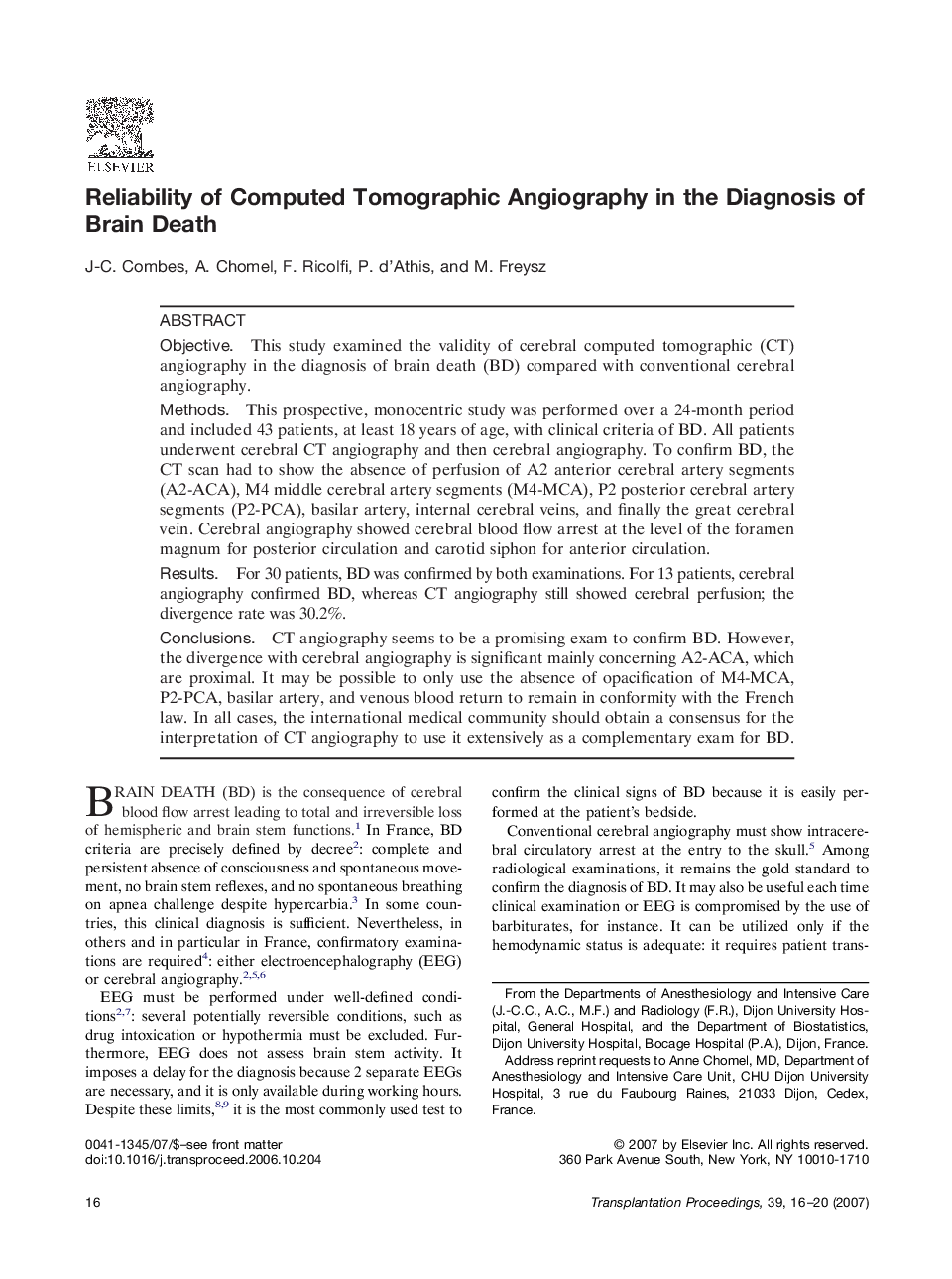| Article ID | Journal | Published Year | Pages | File Type |
|---|---|---|---|---|
| 4262903 | Transplantation Proceedings | 2007 | 5 Pages |
ObjectiveThis study examined the validity of cerebral computed tomographic (CT) angiography in the diagnosis of brain death (BD) compared with conventional cerebral angiography.MethodsThis prospective, monocentric study was performed over a 24-month period and included 43 patients, at least 18 years of age, with clinical criteria of BD. All patients underwent cerebral CT angiography and then cerebral angiography. To confirm BD, the CT scan had to show the absence of perfusion of A2 anterior cerebral artery segments (A2-ACA), M4 middle cerebral artery segments (M4-MCA), P2 posterior cerebral artery segments (P2-PCA), basilar artery, internal cerebral veins, and finally the great cerebral vein. Cerebral angiography showed cerebral blood flow arrest at the level of the foramen magnum for posterior circulation and carotid siphon for anterior circulation.ResultsFor 30 patients, BD was confirmed by both examinations. For 13 patients, cerebral angiography confirmed BD, whereas CT angiography still showed cerebral perfusion; the divergence rate was 30.2%.ConclusionsCT angiography seems to be a promising exam to confirm BD. However, the divergence with cerebral angiography is significant mainly concerning A2-ACA, which are proximal. It may be possible to only use the absence of opacification of M4-MCA, P2-PCA, basilar artery, and venous blood return to remain in conformity with the French law. In all cases, the international medical community should obtain a consensus for the interpretation of CT angiography to use it extensively as a complementary exam for BD.
